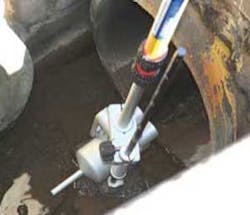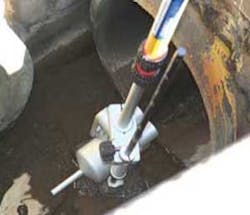Leveraging salinity contrast between fresh, salt water to generate electricity
PALO ALTO, CA, Mar. 30, 2011 -- Researchers from Stanford University have come up with a unique battery design that leverages the salinity contrast between fresh water and seawater to produce electricity.
The battery is relatively simple: Two electrodes, one positive and one negative, are immersed in a liquid containing ions. In water, those are chlorine and sodium.
When the discharge is complete, the battery is drained of seawater and the cycle can begin again.
Using seawater collected from the Pacific Ocean and fresh water from a lake in the Sierra Nevada, the research team was able to achieve 74 percent efficiency in converting the potential energy in the battery into an electrical current. With some simple modifications, they suspect efficiency could be improved to 85 percent.
According to the team's calculations, a power plant operating with 50 cubic meters of fresh water per second could produce up to 100 megawatts of power -- enough to provide electricity for about 100,000 households.
Lead researcher Yi Cui suggested that anywhere fresh water enters the sea could be a potential site for a power plant using this type of battery.
To minimize the potential environmental impact, the team used environmentally benign manganese dioxide for the positive electrode. The process, they said, should also have minimal impact since discharge water would be a mixture of fresh and seawater, released into an area where the two waters are already mixing at the natural temperature.
The researchers pointed out that the "fresh" water doesn't have to come from a lake or river -- stormwater runoff or even gray water could work. And, the team plans to further investigate the possibility of using treated wastewater.
###

